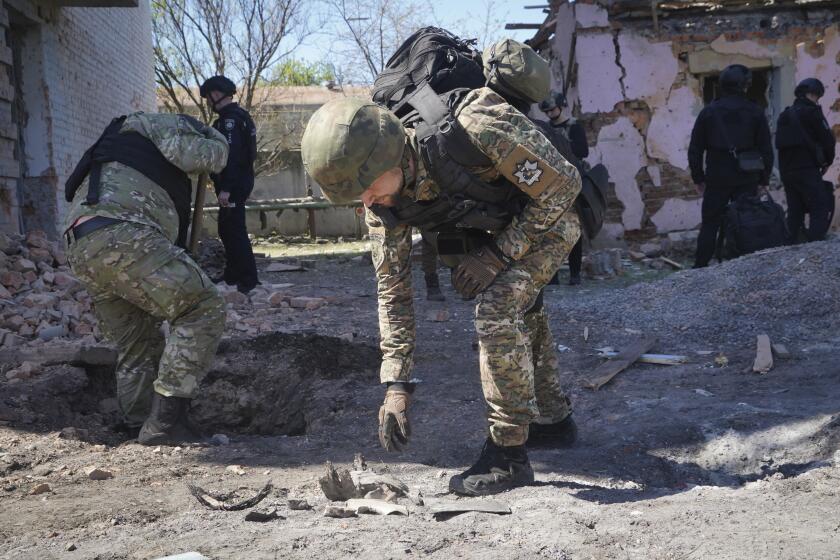Fishermen Report Netting Toxic-Waste Drums at Sea
Fishermen who cast their nets off the New England coast say they are frequently hauling in an unwelcome catch--barrels filled with poisonous wastes.
One fisherman, Salvatore LoGrasso, said he has been unable to work for about two years, since he hauled in a leaky barrel that emitted fumes so strong he was knocked unconscious. His son, Marco, who called the U.S. Coast Guard, said he was told the barrel contained toxic waste.
“I try hard to go fishing, and every time I go out I get so dizzy,” said LoGrasso, 50.
Last February, the crew of the Vito C reported hauling up a 55-gallon drum filled with a substance that left the crew teary-eyed and gasping for breath. They said it burned the scales off fish.
Those two reports are the only ones in the last four years of toxic waste being hauled in by fishermen off the New England coast, said Lt. Bob Corbin, an environmental response officer with the Coast Guard.
There is no law saying such incidents must be reported, and some fishermen say they don’t bother.
“A couple of different times it has happened to me,” veteran fisherman Richard Tucker said. On one occasion, he said, a drum burst open on deck and the fumes “took your breath away.”
Paul Keough, deputy regional administrator for the Environmental Protection Agency, said that officials don’t really know how severe a problem toxic pollution is in the area.
“No one knows, quite frankly, exactly how much waste was dumped over the years,” he said.
He estimated that there are about 4,000 barrels of low-level radioactive waste in the area. Such waste was legally dumped at sea about 20 miles east of Boston until the 1970s. An EPA study in 1981 concluded that the site posed no danger of radioactive waste contamination.
The Vito C made its dangerous haul more than 100 miles from that dumping ground.
Keough said he doesn’t know why barrels of toxic waste would be found that far away. He said the containers could have become snagged in fishing nets and dragged out of the area.
The EPA plans to probe the ocean bottom this summer to get a better picture of how much waste is lying below and exactly what it is. After that, they will decide what to do.
Removing what’s down there is one possibility, but officials noted that barrels could burst as they are brought to the surface.
Another solution, Keough said, might be to cover the old dumping ground with clean dredge material.
“There are some people who don’t want us do that,” he added, “particularly with the radioactive waste, because you can never get it out.”
More to Read
Start your day right
Sign up for Essential California for news, features and recommendations from the L.A. Times and beyond in your inbox six days a week.
You may occasionally receive promotional content from the Los Angeles Times.






